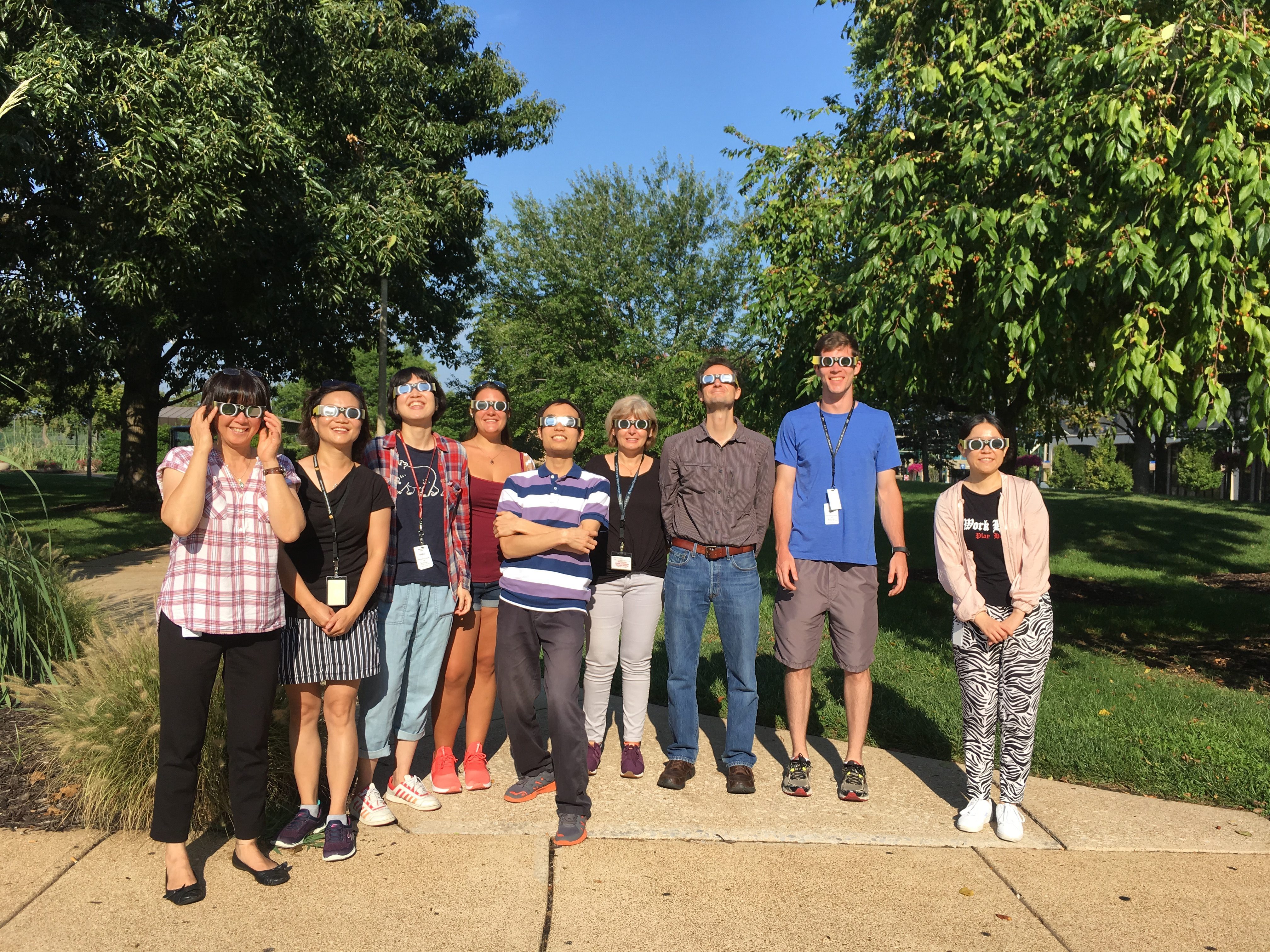Kerschensteiner Lab
Daniel Kerschensteiner, MD, Professor, Ophthalmology and Visual Sciences; Professor, Neuroscience; Professor, Biomedical Engineering

Research
We would like to understand how neural circuits process information and to uncover the principles and mechanisms that guide their development. Our efforts concentrate on the retina, the first stage of visual processing, and its subcortical targets. We generate transgenic and viral tools to label and manipulate specific neurons in these circuits. We use light – the natural input to the visual system – to elicit signals with high precision and track signal transformations across successive neurons of the circuitry using patch-clamp and multi-electrode array recordings. In addition, we study the organization and processing of visual information at a subcellular level by two-photon imaging. We explore molecular mechanisms that regulate the plasticity and specificity of neuronal morphologies and synaptic connections in developing visual circuits. Thus, we hope to identify features of neural circuit architecture that perform particular computations and characterize how they arise during development. By interfering with the development and/or function of these features, we aim to identify the behavioral significance of specific retinal and subcortical computations.
Publications
View all Daniel Kerschensteiner NCBI publications on PubMed»
- Johnson RE, Tien NW, Shen N, Pearson JT, Soto F, Kerschensteiner D. (2017) Homeostatic plasticity shapes the visual system’s first synapse. Nat Commun 8(1):1220
- Hsiang JC, Johnson KP, Madisen L, Zeng H, Kerschensteiner D. (2017) Local processing in neurites of VGluT3-expressing amacrine cells differentially organizes visual information. Elife Oct 12; 6
- Kerschensteiner D, Guido W. (2017) Organization of the dorsal lateral geniculate nucleus in the mouse. Vis Neurosci Jan; 34
- Kim T, Kerschensteiner D. (2017) Inhibitory control of feature selectivity in an object motion sensitive circuit of the retina. Cell Rep 19(7):1343-50
- Tien NW, Soto F, Kerschensteiner D. (2017) Homeostatic plasticity shapes cell-type-specific wiring in the retina. Neuron 94(3):656-665
- Kerschensteiner D. (2017) Aligning a synapse. Neuron 93(6):1241-43
- Kerschensteiner D. (2016). Glutamatergic retinal waves. Front Neural Circuits May 10;10
- Tien NW, Kim T, Kerschensteiner D. (2016) Target-specific glycinergic transmission from VGluT3-expressing amacrine cells shapes suppressive contrast response in the retina. Cell Rep 15(7):1369-75
- Faits MC, Zhang C, Soto F, Kerschensteiner D. (2016) Dendritic mitochondria reach stable positions during circuit development. Elife Jan 7;5
- Kerschensteiner D. (2015) Superior colliculus does play dice. Neuron 87(6):1121-3
- Akrouh A, Kerschensteiner D. (2015) Morphology and function of three VIP-expressing amacrine cell types in the mouse retina. J Neurophysiol 114(4):2431-8
- Tien NW, Pearson JT, Heller CR, Demas J, Kerschensteiner D. (2015) Genetically identified suppressed-by-contrast retinal ganglion cells reliably signal self-generated visual stimuli. J Neurosci 35(30):10815-20
- Pearson JT, Kerschensteiner D. (2015) Ambient illumination switches contrast preference of specific retinal processing streams. J Neurophysiol 114(1):540-50
- Kim T, Soto F, Kerschensteiner D. (2015) An excitatory amacrine cell detects object motion and provides feature-selective input to ganglion cells in the mouse retina. Elife May19;4
- Johnson RE, Kerschensteiner D. (2014) Retrograde plasticity and differential competition of bipolar cell dendrites and axons in the developing retina. Curr Biol 24(19):2301-6
- Kerschensteiner D. (2014) Spontaneous network activity and synaptic development. Neuroscientist 20(3):272-90